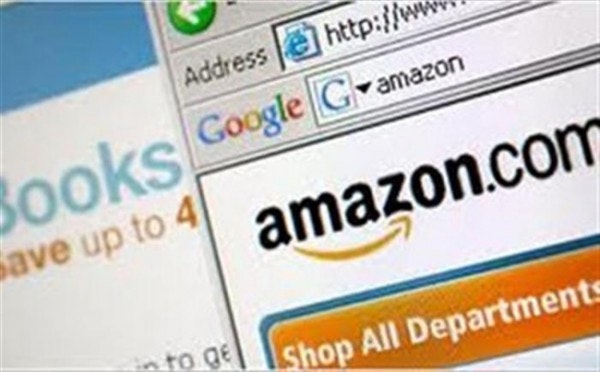When a company says they are looking at a “strategic committee to evaluate the sale of the retail business,” you know things aren’t going well. Barnes & Noble, Inc. (NYSE:BKS) has been battered and bruised for a while by competition from Amazon.com, Inc. (NASDAQ:AMZN), but the company is also losing sales to places like Target Corporation (NYSE:TGT) and Wal-Mart Stores, Inc. (NYSE:WMT) as well. If a customer wants to buy a physical book, and they can find the item at a superstore, why make the extra stop at Barnes & Noble? With the increasing popularity of tablets and e-readers, why buy a physical book at all?

That being said, there appears to be value in Barnes & Noble, Inc. (NYSE:BKS) that investors are missing. With overall revenue down 8.8%, and same store sales down 7.3% in the retail business, there doesn’t appear to be much to like about Barnes & Noble. However, there is actual opportunity here–it just depends on which way the company chooses to go.
One piece of information I picked up on was the company’s commitment to build the NOOK business and “significantly reduce expenses.” The best way to reduce expenses in the NOOK business would be to trim the significant fat in SG&A expenses. In the current quarter, the NOOK business spent 41.17% of their revenue on SG&A. By comparison, the company’s overall SG&A expense as a percentage of revenue was 22.22%.
Among Barnes & Noble’s competition, only Amazon.com, Inc. (NASDAQ:AMZN) spends as much in SG&A, at (ironically) 22.22% as well. Target Corporation (NYSE:TGT) and Wal-Mart are both more efficient operations, with SG&A at 19.19% and 18.13% of revenue, respectively. As you can see, with NOOK spending significantly more on SG&A, there is a real opportunity here.
By my calculations, if the NOOK business cut their SG&A spending to 22% (in line with the rest of the company), this would save about $65 million. The affect this $65 million would have on earnings would be profound. With $65 million in lower expenses, Barnes & Noble, Inc. (NYSE:BKS)’s EPS would have actually increased 42% to about $1.01 per share.
Or They Could Just Kill It Off Or Sell It
I’ve made the argument before that Microsoft might completely acquire Barnes & Noble. As crazy as this sounds, Microsoft could use their superior software margins to compete effectively on price with Amazon.com, Inc. (NASDAQ:AMZN) and others. Microsoft gaining access to the over 670 Barnes & Noble college bookstores would also give the software giant a place to try and win market share for smartphones and tablets. However, if that deal never happens, Barnes & Noble should consider sticking the NOOK in a corner.
In case you don’t believe that Barnes & Noble, Inc. (NYSE:BKS) would be better off without the NOOK, consider these facts. Including NOOK, revenue was down 8.8%–without this division revenue would have been down 8.19%. Same-store sales in retail were down 7.3% with NOOK, and just 2.2% without. Most important, EBITDA, which was down with NOOK, would have actually increased 5.63% without this unit. The bottom line is that Barnes & Noble doesn’t know the digital distribution business, and no matter how they spin it, the NOOK isn’t driving anything other than losses.
If a technology company like Microsoft didn’t want the NOOK business, the most obvious choice for the tablet would be Best Buy Co., Inc. (NYSE:BBY). Best Buy is very good at selling smartphones and tablets, and having their own device would allow the company to compete more directly with Amazon.com, Inc. (NASDAQ:AMZN). Perhaps a partnership between Best Buy and Microsoft would work. No matter what direction this unit goes, it has to go.
So What Happens To The Retail Division?
If the retail division of Barnes & Noble goes, there isn’t much left. The retail business represents 67.68% of revenue, and 86.21% of positive EBITDA in the current quarter. I have to believe when retail goes, the other pieces go the the highest bidder.
From an investment standpoint, Barnes & Noble is being valued very cheaply at the current time. The company has no long-term debt and about $214 million in cash. With a market cap of less than $1 billion, at current prices, the whole company minus the cash is valued at about $800 million. Given that the company has about $4.2 billion in assets and less than $3 billion in debts, it seems reasonable that there is some hidden value here. Investors buying Barnes & Noble today have to look at the company as a turnaround or buyout opportunity.
While I think there is value inBarnes & Noble, Inc. (NYSE:BKS) beyond the current stock price, longer-term investors should likely look elsewhere. Amazon.com, Inc. (NASDAQ:AMZN) certainly isn’t cheap at over 175 times forward earnings, but there is no doubt they are putting physical retailers out of business. For more conservative investors, Target Corporation (NYSE:TGT) and Wal-Mart look like good plays as well. These two companies give investors real earnings growth, and a yield of at least 2%, which neither Barnes & Noble nor Amazon can claim.
The article This Company Is Missing The Real Problem originally appeared on Fool.com and is written by Chad Henage.
Copyright © 1995 – 2013 The Motley Fool, LLC. All rights reserved. The Motley Fool has a disclosure policy.


